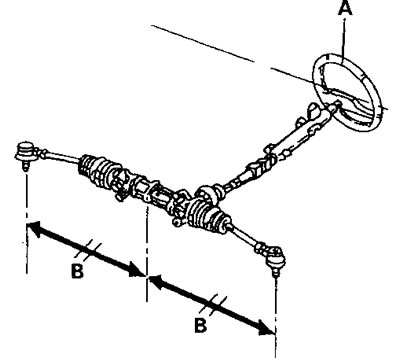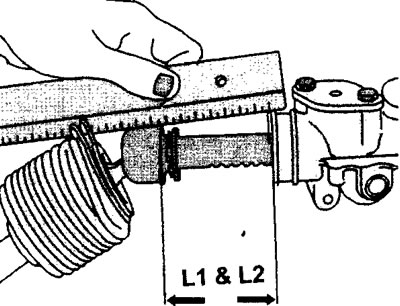1. Turn the steering wheel all the way to one side. Stick a piece of electrical tape or tape on the top of the steering wheel. Draw line A on the tape with a marker (see illustration).

10.1 Steering neutral position. If mark A on the steering wheel is exactly in the middle, then the distance B from the fingers of the tie rod ends is the same
2. Turn the steering wheel from this position as far as it will go in the opposite direction. Count the number of revolutions of the steering wheel. Divide the resulting number of revolutions by 2. Turn the steering wheel back, making as many revolutions as it turned out when dividing by 2.
3. Make sure the wheels are straight ahead. If not, adjust the tie rod end on the side where the wheels are facing so they are straight.
4. Check the position of the steering wheel. If it is not in the neutral position, then remove the steering wheel and install again in accordance with the position of the wheels in the neutral position.
If the steering gear is removed, then before installation it must be set to the neutral position as follows.
5. Rotate the pinion until the toothed rack reaches the stop on the longer side. Measure the protruding part of the gear rack and write down the resulting value (see illustration).

10.5 Rotate the gear on the steering shaft until the toothed rack reaches the stop on the longer side. Measure the protruding part of the gear rack and write down the resulting value
6. Turn the gear in the opposite direction until it stops so that the protective cuff on the steering mechanism is fully compressed and measure the protrusion again.
To determine the neutral position of the steering mechanism, you need to add the resulting values (LI + L2) and divide by 2. In other words, you need to add the length of the maximum and minimum moves of the rack and divide the result by 2.
7. Turn the gear in the opposite direction until the distance from the edge of the cuff to the mark on the rack is equal to the value obtained.
8. Reinstall steering gear.
